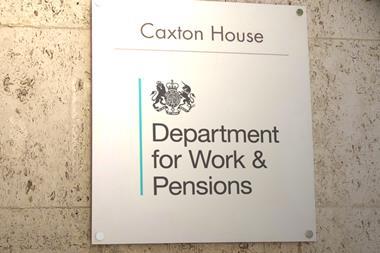The UK National Employment Savings Trust (NEST) is to consult on the future of its offering given the changes announced to the defined contribution (DC) at-retirement market.
NEST, the UK’s largest DC master trust by number of members, will consult on the role of annuities in the market, balancing growth and protecting in-retirement investment strategies and whether its members can share risk in collective DC (CDC) arrangements.
It will also evaluate how to mitigate risks associated with income-drawdown products and whether its expected scale could allow it to offer services in-house.
NEST currently has more than 1.7m members and is widely expected to be the UK’s largest DC provider after auto-enrolment is fully rolled out in 2018.
Its default target-date fund investment strategy – where 99% of its members invest – currently de-risks on approach to retirement, shifting towards cash or annuities for larger savings.
However, with compulsory annuitisation now abolished in this year’s Budget, Mark Fawcett, CIO at NEST, said the industry had a “once-in-a-generation opportunity to make DC savings work”.
“The old binary debate between annuities and drawdown is no longer relevant,” he said.
“We have an opportunity to look at how elements of each might be used to create more flexible solutions.”
Fawcett said the provider would take as much time as necessary to design its offering, with members retiring in the near-term unlikely to have built up enough savings to be affected.
NEST said it needed to account for savers’ concern over market volatility, longevity risk and design outcomes for both engaged and less engaged members.
“If they are not going to buy an annuity, they are likely to be exposed to volatility, and we’re thinking about those features,” Fawcett said.
He added that the consultation needed to look at potential ways of hedging longevity risk but without purchasing an annuity, and design a default path for members using annuities and drawdown.
“We still need a default path to allow people to draw retirement income without having to make complex decisions,” he said.
Fawcett said consultation around the three differing glide paths towards cash, annuities or drawdown was unlikely to produce a consensus.
Basing this on pot size would be an interesting discussion, he said, adding that NEST would monitor its retirees’ decisions.
The consultation will also look at the mechanics of annuitisation and income drawdown, while exploring how products could interact.
Fawcett said this would explore options such as members initially starting with a drawdown product, how a default drawdown option would work, the risks of emptying member pots and the economically appropriate time to annuitise.
The organisation said it currently remained neutral on who would deliver potential products to its members.
“We do care about what product people end up investing in, so this will be part of the process,” Fawcett said.
“We would need some changes to legislation [to provide an income-drawdown product internally], and the Department for Work & Pensions would have to be comfortable about what it wanted NEST to do.”
The consultation also looks into whether risk-sharing and CDC could operate in either accumulation or decumulation in the scheme.
“We are very open-minded about it,” Fawcett said.
NEST raised concerns around governance challenges and highlighted research conducted by the master trust on asset allocation, which showed CDC schemes to be less aggressive than traditional DC.
Fawcett said CDC trustees were perhaps overly focused on liability management, neglecting the contribution and higher risk-tolerance of members joining the scheme.
“We question whether the extra 30% [suggested better return from CDC] is ever realised in practice,” he said.
The consultation runs until January 2015, with NEST expected to publish preliminary findings in the spring.
It said it would welcome views from UK and international market participants.


























No comments yet